Agriculture
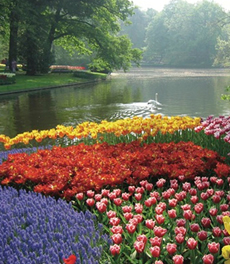 Flowering plants in Europe vary from those growing in mediterranean to alpine to Arctic regions.
Flowering plants in Europe vary from those growing in mediterranean to alpine to Arctic regions.
Many of Europe?s flowering plants are similar to those in North America, belonging to many of the same genera but to different species. Some of the most common North American flowering plants have cousins in Europe, but their location varies according to their latitude and altitude.
Climate and Soil
Themost important factor determining the location of plants is climate. The continent of Europe ranges from the coastal areas on the northern shores of the Mediterranean Sea and Black Sea to the Arctic Ocean north of the Scandinavian peninsula. Although most of Europe is in the temperate climate zone, the areas that border the Mediterranean Sea are nearly all frost-free.
By contrast, those parts of Europe that form the Scandinavian peninsula and northern Russia have frost-free periods each year of as little as two months. As a result, there is a south-to-north gradation of the flowering plants.
Moreover, mountains separate land that is also separated by latitude. The division is perhaps more marked than on other continents because the Alps run west to east, the highest peaks being without vegetation,whereas the mountains in North America run north to south.
Since climate is strongly a function of latitude, there is, in effect, a double line separating the vegetation of the part of Europe along the Mediterranean from the part that is north of the Alps, instead of the gradual gradation that is more characteristic of North America.
Another factor in determining where flowering plants will be found is soil. The soil in the south of Europe tends to be sandy; the low annual rainfall at the Mediterranean shoreline means that what little rain there is flows rapidly through the soil, leaving relatively little for plants.
In the north, much of the soil is permanently frozen, so only plants that can grow in a short period of time in the summer and survive many months of frozen life will be found there.
In between these areas, European soils vary between those that make ideal growing conditions for flowering plants, the black earth soils of central Europe, and those that are thin layers over underlying rock or that trap water in the soil layers just below the surface, creating marshy conditions.
An east-to-west factor also influences which flowering plants are found where in Europe. The Atlantic coastline is warmed year-round by the Gulf Stream, so that normal temperatures in the parts of the continent touched by this current (including much of the western Baltic Sea) have warmer temperatures in winter than their latitudes would indicate.
Southern Norway, for instance, is on the same latitude as Greenland, most of which is covered with ice and snow throughout the year; but many plants, including agricultural crops, grow in southern Norway because of the Gulf Stream. Because rainfall is high, these parts of Europe tend to be wetter and cooler in summer than other parts of the world at the same latitudes.
Europe has been occupied by humans for such a long period of time that there are almost no parts of Europe where the vegetation has been unaffected by humans. There are virtually no ?virgin forests? in Europe.
Forests
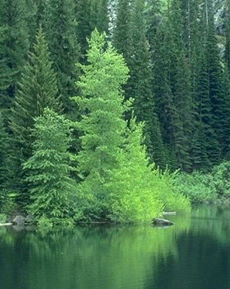 Most of Europe?s trees are similar to those in North America, but these are related by genus and are not members of the same species. This is true of oaks, maples, ashes, elms, birches, beeches, chestnuts,walnuts, apples, and hornbeams as well as conifers.
Most of Europe?s trees are similar to those in North America, but these are related by genus and are not members of the same species. This is true of oaks, maples, ashes, elms, birches, beeches, chestnuts,walnuts, apples, and hornbeams as well as conifers.
Some of the native tree species of Europe have been brought to North America and have be come a part of the American forest. The sycamore, for example, is the same species in North America as in Europe. The sycamore is a long-lived tree; some sycamores that were planted in North America during the colonial era are still alive.
The mountain ash, with its bright orange berries, is another tree from Europe (where it is known as the rowan) that has emigrated to North America. The horse chestnut is yet another tree native to Europe that has long been settled in North America.
Among the evergreens, the Norway spruce has been widely planted and now seeds itself in North America. The Scots pine has been widely planted in North America; many Christmas trees sold every year in the United States are Scots pine. The European larch has become popular with the U.S. forest industry because it is suited to reforestation after clear-cutting.
Some North American species have made the opposite journey:Much of Scotland has been reforested with the Sitka spruce, a native of the Pacific Northwest. Another native American evergreen that has made the trip to Europe is the white pine, known in Europe as the Weymouth pine. Plantations of white pine have been set up all over Europe, because Europe did not have a soft pine, and the wood of the white pine is easily worked.
Apple Trees
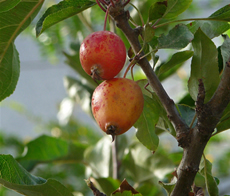 One important European tree that has had a large impact on the United States is the apple. The apple tree that produces the familiar fruit appears to have originated in southern Russia and made its way throughout Europe. Many apple varieties were cultivated by the Romans.
One important European tree that has had a large impact on the United States is the apple. The apple tree that produces the familiar fruit appears to have originated in southern Russia and made its way throughout Europe. Many apple varieties were cultivated by the Romans.
The English and other European settlers of North America, finding only crab apples (North America?s only native apple)when they arrived, imported familiar apple varieties from Europe. Orchards were among the first things the English settlers of New England planted in Massachusetts Bay.
Shrubs
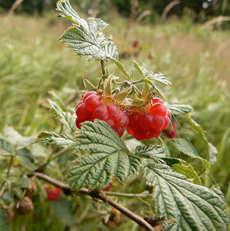 Many European shrubs have become immigrants too. The box and holly are much prized for foundation planting, and the privet makes a neat hedge. The buckthorn bush has also made the journey, although it is less widely sold at nurseries. The juniper in Europe is the same as the juniper in North America, but the raspberry is not.
Many European shrubs have become immigrants too. The box and holly are much prized for foundation planting, and the privet makes a neat hedge. The buckthorn bush has also made the journey, although it is less widely sold at nurseries. The juniper in Europe is the same as the juniper in North America, but the raspberry is not.
Currants and gooseberries are European shrubs that have been widely transplanted, although one of the European currant varieties harbors a disease that affects the North American white pine. By contrast, the cranberry is a North American shrub that has lately been transplanted to Europe. North American blueberries are quite different from the related species in Europe.
The raspberry bush found throughout eastern North America is a European native. Because birds are frequent consumers of its fruit, it has spread well beyond the beds where it was originally planted. The heather that covers many of the hills of northern Europe, where it is a native, has become popular with American florists as a filler for bouquets.
One of the most common landscape shrubs in the United States, the lilac, is of European origin, but it was among the earliest to make the trip to North America. Today the foundations of old colonial homesteads can often be located because, although the house is gone, the lilacs that once surrounded it survive.
Herbs
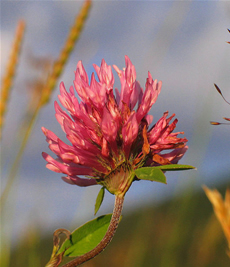 Herbs or wildflowers have spread across the continents much as shrubs have. Many of the most common North American wildflowers, such as the dandelion, are immigrants. So is the wild strawberry as well as the plantain that infests lawns. Many wildflowers are both European and American in origin, although in most cases the species differ.
Herbs or wildflowers have spread across the continents much as shrubs have. Many of the most common North American wildflowers, such as the dandelion, are immigrants. So is the wild strawberry as well as the plantain that infests lawns. Many wildflowers are both European and American in origin, although in most cases the species differ.
Among them are the violets, some of the cinquefoils, many buttercup varieties, and the marsh marigold. The clovers that are so familiar to Americans are all imports?the white clover, the red clover, and the alsike clover?are all natives of Europe.
Several genera of grasses are found on both continents: Kentucky bluegrass is really the European smooth meadow grass. Annual rye grass, often used to green up new lawns quickly, is a European import, as is red fescue, common in hayfields. Timothy hay, cultivated in the United States as feed hay, is also an import from Europe.
The marshes and swamps of Europe are populated mostly by indigenous plants. Large numbers of sedges that are native to Europe are grouped together in the Carex genus and can be found in Europe?s wetlands.
Wetlands may have more ?virgin? plant communities than anywhere else in Europe, because they were unsuitable for cultivation. Europeans have drained many of the continent?s wetlands to convert the land to farmland; the most notable case is the Netherlands, where land has been reclaimed from the sea so that crops can be grown on it.
Among the shrubs, Europe?s wetlands, like those inNorth America, harbor alders, but Europe?s are different species from those found in North America. The same can be said for willows, which grow well where ample moisture is available.
Commercial Plants
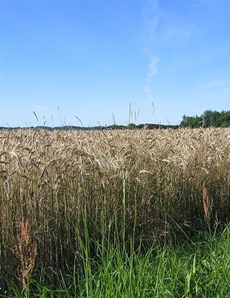 Ever since the first agricultural revolution, ten thousand years ago, humans have adapted plants to their needs. This is especially true for the grains, most of which originated in the Middle East.
Ever since the first agricultural revolution, ten thousand years ago, humans have adapted plants to their needs. This is especially true for the grains, most of which originated in the Middle East.
Wheat, oats, barley, rye, and others that could become food for humans were altered from their original form by careful plant breeding. This is also true for the flowers that are the staple of the florists? trade?roses, chrysanthemums, begonias, and car nations are all adaptations of wild plants.
Tulips are widely known flowers that originated in Eurasia from Austria and Italy eastward to Japan, with two-thirds of them native to the eastern Mediterranean and the southeastern parts of Russia.
The Dutch cultivated tulips beginning in the 1500?s and made them into a staple export. The grape hyacinth is a European native, as is the full size hyacinth. Crocuses are natives of the Mediterranean basin.
Olive Trees
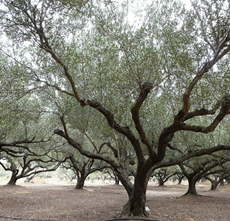 One native flowering plant of Europe deserves special mention: the olive tree. Having originated along the shores of the Mediterranean Sea, it has been cultivated and modified to increase the size of its fruit since ancient times.
One native flowering plant of Europe deserves special mention: the olive tree. Having originated along the shores of the Mediterranean Sea, it has been cultivated and modified to increase the size of its fruit since ancient times.
It remains an important agricultural resource for Mediterranean nations, especially Greece, Italy, France, and Spain. The Spanish conquerors of Central America carried the olive to the new world, and it was successfully introduced into California.
The Maquis
Uncultivated olive trees form part of the vegetation of the maquis, an area in France and Spain where the native olive grows with the carob, a small native tree like the olive, and the holmoak. Most of these trees are so stunted by the impoverished soil, heavily eroded over the centuries, that they are little more than bushes.
There are also a variety of shrubs characteristics of the maquis, such as a clematis vine, the Mediterranean buckthorn, and the common myrtle. A local variety of grass covers the ground between the trees and shurbs. Similar communities can also be found in Greece, where they provide grazing for goats.
Vines
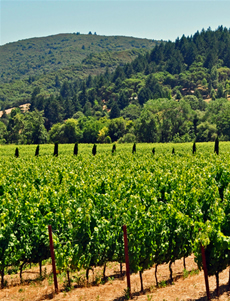 The grapevine has been of commercial importance for centuries. The Greeks and Romans raised grapes and made wine from them. The wine grape appears to have originated in the Mediterranean basin, but many varieties of grape have developed. European varieties have been transplanted to North America, and the process has also worked in reverse.
The grapevine has been of commercial importance for centuries. The Greeks and Romans raised grapes and made wine from them. The wine grape appears to have originated in the Mediterranean basin, but many varieties of grape have developed. European varieties have been transplanted to North America, and the process has also worked in reverse.
In the late nineteenth century,when a devastating disease known as phylloxera ravaged French vineyards, American grapevine rootstock was imported into France, and the French vines grafted onto it, because the American rootstock had shown itself less subject to the disease.
Another vine is the ivy. There are ivies native to almost every continent, but European ivy, sometimes called English ivy, has spread far beyond its native ground. It is popular as a wall covering and is frequently seen in gardens.
- Biological Invasions
Biological Invasions Biological invasions are the entry of a type of organism into an ecosystem outside its historic range. In a biological invasion, the "invading" organism may be an infectious virus, a bacterium, a plant, an insect, or an animal. Species...
- Central American Flora
Central American FloraCentral America ? comprising the nations Belize, Costa Rica, El salvador, Guatemala, Honduras, Nicaragua, and Panama ? is a land bridge that connects North America and South America, and many of its plants are similar to plants found...
- European Agriculture
European AgricultureEuropean agricultural practices are affected by the policies of the European Union, in addition to global conditions which influence farming everywhere. Agriculture in Europe goes back to classical times. The development first of the...
- Taiga
Taiga in Findland ?Taiga? derives from a Russian word for the forests of cone-bearing, needle-leaved, generally evergreen trees of northern Eurasia and North America. ?Coniferous forest? and ?boreal forest? are other names given to this biome. Some botanists...
- Rice
Introduction Rice is a grain belonging to the grass family. It is related to other grass plants such as wheat, oats and barley which produce grain for food and are known as cereals. Rice refers to two species (Oryza sativa and Oryza glaberrima)...
Agriculture
European Flora

Many of Europe?s flowering plants are similar to those in North America, belonging to many of the same genera but to different species. Some of the most common North American flowering plants have cousins in Europe, but their location varies according to their latitude and altitude.
Climate and Soil
Themost important factor determining the location of plants is climate. The continent of Europe ranges from the coastal areas on the northern shores of the Mediterranean Sea and Black Sea to the Arctic Ocean north of the Scandinavian peninsula. Although most of Europe is in the temperate climate zone, the areas that border the Mediterranean Sea are nearly all frost-free.
By contrast, those parts of Europe that form the Scandinavian peninsula and northern Russia have frost-free periods each year of as little as two months. As a result, there is a south-to-north gradation of the flowering plants.
Moreover, mountains separate land that is also separated by latitude. The division is perhaps more marked than on other continents because the Alps run west to east, the highest peaks being without vegetation,whereas the mountains in North America run north to south.
Since climate is strongly a function of latitude, there is, in effect, a double line separating the vegetation of the part of Europe along the Mediterranean from the part that is north of the Alps, instead of the gradual gradation that is more characteristic of North America.
Another factor in determining where flowering plants will be found is soil. The soil in the south of Europe tends to be sandy; the low annual rainfall at the Mediterranean shoreline means that what little rain there is flows rapidly through the soil, leaving relatively little for plants.
In the north, much of the soil is permanently frozen, so only plants that can grow in a short period of time in the summer and survive many months of frozen life will be found there.
In between these areas, European soils vary between those that make ideal growing conditions for flowering plants, the black earth soils of central Europe, and those that are thin layers over underlying rock or that trap water in the soil layers just below the surface, creating marshy conditions.
An east-to-west factor also influences which flowering plants are found where in Europe. The Atlantic coastline is warmed year-round by the Gulf Stream, so that normal temperatures in the parts of the continent touched by this current (including much of the western Baltic Sea) have warmer temperatures in winter than their latitudes would indicate.
Southern Norway, for instance, is on the same latitude as Greenland, most of which is covered with ice and snow throughout the year; but many plants, including agricultural crops, grow in southern Norway because of the Gulf Stream. Because rainfall is high, these parts of Europe tend to be wetter and cooler in summer than other parts of the world at the same latitudes.
Europe has been occupied by humans for such a long period of time that there are almost no parts of Europe where the vegetation has been unaffected by humans. There are virtually no ?virgin forests? in Europe.
Forests

Some of the native tree species of Europe have been brought to North America and have be come a part of the American forest. The sycamore, for example, is the same species in North America as in Europe. The sycamore is a long-lived tree; some sycamores that were planted in North America during the colonial era are still alive.
The mountain ash, with its bright orange berries, is another tree from Europe (where it is known as the rowan) that has emigrated to North America. The horse chestnut is yet another tree native to Europe that has long been settled in North America.
Among the evergreens, the Norway spruce has been widely planted and now seeds itself in North America. The Scots pine has been widely planted in North America; many Christmas trees sold every year in the United States are Scots pine. The European larch has become popular with the U.S. forest industry because it is suited to reforestation after clear-cutting.
Some North American species have made the opposite journey:Much of Scotland has been reforested with the Sitka spruce, a native of the Pacific Northwest. Another native American evergreen that has made the trip to Europe is the white pine, known in Europe as the Weymouth pine. Plantations of white pine have been set up all over Europe, because Europe did not have a soft pine, and the wood of the white pine is easily worked.
Apple Trees

The English and other European settlers of North America, finding only crab apples (North America?s only native apple)when they arrived, imported familiar apple varieties from Europe. Orchards were among the first things the English settlers of New England planted in Massachusetts Bay.
Shrubs

Currants and gooseberries are European shrubs that have been widely transplanted, although one of the European currant varieties harbors a disease that affects the North American white pine. By contrast, the cranberry is a North American shrub that has lately been transplanted to Europe. North American blueberries are quite different from the related species in Europe.
The raspberry bush found throughout eastern North America is a European native. Because birds are frequent consumers of its fruit, it has spread well beyond the beds where it was originally planted. The heather that covers many of the hills of northern Europe, where it is a native, has become popular with American florists as a filler for bouquets.
One of the most common landscape shrubs in the United States, the lilac, is of European origin, but it was among the earliest to make the trip to North America. Today the foundations of old colonial homesteads can often be located because, although the house is gone, the lilacs that once surrounded it survive.
Herbs

Among them are the violets, some of the cinquefoils, many buttercup varieties, and the marsh marigold. The clovers that are so familiar to Americans are all imports?the white clover, the red clover, and the alsike clover?are all natives of Europe.
Several genera of grasses are found on both continents: Kentucky bluegrass is really the European smooth meadow grass. Annual rye grass, often used to green up new lawns quickly, is a European import, as is red fescue, common in hayfields. Timothy hay, cultivated in the United States as feed hay, is also an import from Europe.
The marshes and swamps of Europe are populated mostly by indigenous plants. Large numbers of sedges that are native to Europe are grouped together in the Carex genus and can be found in Europe?s wetlands.
Wetlands may have more ?virgin? plant communities than anywhere else in Europe, because they were unsuitable for cultivation. Europeans have drained many of the continent?s wetlands to convert the land to farmland; the most notable case is the Netherlands, where land has been reclaimed from the sea so that crops can be grown on it.
Among the shrubs, Europe?s wetlands, like those inNorth America, harbor alders, but Europe?s are different species from those found in North America. The same can be said for willows, which grow well where ample moisture is available.
Commercial Plants

Wheat, oats, barley, rye, and others that could become food for humans were altered from their original form by careful plant breeding. This is also true for the flowers that are the staple of the florists? trade?roses, chrysanthemums, begonias, and car nations are all adaptations of wild plants.
Tulips are widely known flowers that originated in Eurasia from Austria and Italy eastward to Japan, with two-thirds of them native to the eastern Mediterranean and the southeastern parts of Russia.
The Dutch cultivated tulips beginning in the 1500?s and made them into a staple export. The grape hyacinth is a European native, as is the full size hyacinth. Crocuses are natives of the Mediterranean basin.
Olive Trees

It remains an important agricultural resource for Mediterranean nations, especially Greece, Italy, France, and Spain. The Spanish conquerors of Central America carried the olive to the new world, and it was successfully introduced into California.
The Maquis
Uncultivated olive trees form part of the vegetation of the maquis, an area in France and Spain where the native olive grows with the carob, a small native tree like the olive, and the holmoak. Most of these trees are so stunted by the impoverished soil, heavily eroded over the centuries, that they are little more than bushes.
There are also a variety of shrubs characteristics of the maquis, such as a clematis vine, the Mediterranean buckthorn, and the common myrtle. A local variety of grass covers the ground between the trees and shurbs. Similar communities can also be found in Greece, where they provide grazing for goats.
Vines

In the late nineteenth century,when a devastating disease known as phylloxera ravaged French vineyards, American grapevine rootstock was imported into France, and the French vines grafted onto it, because the American rootstock had shown itself less subject to the disease.
Another vine is the ivy. There are ivies native to almost every continent, but European ivy, sometimes called English ivy, has spread far beyond its native ground. It is popular as a wall covering and is frequently seen in gardens.
- Biological Invasions
Biological Invasions Biological invasions are the entry of a type of organism into an ecosystem outside its historic range. In a biological invasion, the "invading" organism may be an infectious virus, a bacterium, a plant, an insect, or an animal. Species...
- Central American Flora
Central American FloraCentral America ? comprising the nations Belize, Costa Rica, El salvador, Guatemala, Honduras, Nicaragua, and Panama ? is a land bridge that connects North America and South America, and many of its plants are similar to plants found...
- European Agriculture
European AgricultureEuropean agricultural practices are affected by the policies of the European Union, in addition to global conditions which influence farming everywhere. Agriculture in Europe goes back to classical times. The development first of the...
- Taiga
Taiga in Findland ?Taiga? derives from a Russian word for the forests of cone-bearing, needle-leaved, generally evergreen trees of northern Eurasia and North America. ?Coniferous forest? and ?boreal forest? are other names given to this biome. Some botanists...
- Rice
Introduction Rice is a grain belonging to the grass family. It is related to other grass plants such as wheat, oats and barley which produce grain for food and are known as cereals. Rice refers to two species (Oryza sativa and Oryza glaberrima)...
